A pleasant day of Oysters and STEM learning
Dylan Taillie ·On Friday, June 10th, Judy O’Neil and I participated in the second annual Billion Oyster Projects Curriculum and Community Enterprise for Restoration Science (BOP CCERS) - Science, Technology, Engineering and Math education (STAM) Research Symposium on Governors Island. This event was similar to the inaugural event of June 2015, however this year included the new cohort of middle school students, an updated oyster musical, and a student scavenger hunt which kept things fun and interesting for project partners and students alike. The weather was an ideal sunny and balmy 76 degrees, allowing students to enjoy their time at many different stations around the island.
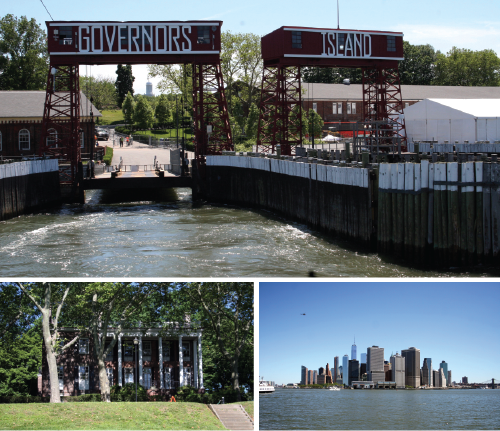
Judy and I arrived on historic and scenic Governors Island at around 9:30 on Friday morning. Catching an early ferry allowed us to have a little bit of down time before setting up our station at the Admiral’s House for the research symposium. I snapped these photos of the Admiral’s House, NYC skyline and entrance to Governors Island while we were having our take-away breakfast on the island.
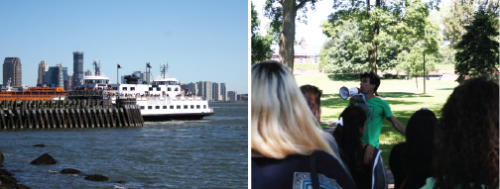
Students arrived around 10am to set up their research projects at the Admiral’s House. Sam Janis – Project Manager on the BOP-CCERS project – introduced students to the STEM Symposium and gave them a run down of the day’s planned events.
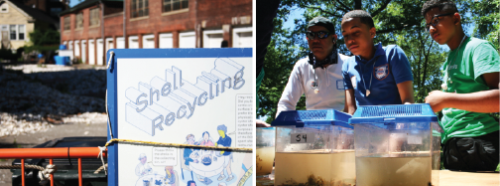
Throughout the day students rotated between four stations – the research STEM Symposium projects (at the Admiral’s House where Judy and I were set up), the shell pile and oyster reef, the ‘yellow-house’ that contained marine organisms for students to identify, and finally the National Park site, Fort Jay, for a little history lesson about Governors Island and the War of 1812. Judy and I remained at our station at the Admiral’s House in order to help students design conceptual diagrams as a science communication activity.

Students used a New York Harbor centric symbol library to create their vision of a healthy versus an unhealthy New York Harbor. Students were able to clearly picture inputs such as sewage and nutrients, as well as visualize what a clean harbor would look like with oyster reefs and restoration initiatives.

Students from middle schools around New York City, New York Harbor School students, and representatives from environmental organizations all presented projects at the symposium. These photos are just a snippet of the many projects that Judy and I read about as we walked around the house.
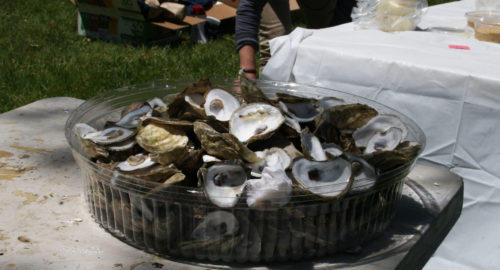
At lunch, students learned to shuck oysters and those who dared even had one or two raw oysters on the half shell. The students learned that eating oysters was ok as long as the shells make it back in the harbor to provide substrate for other oysters to grow on.
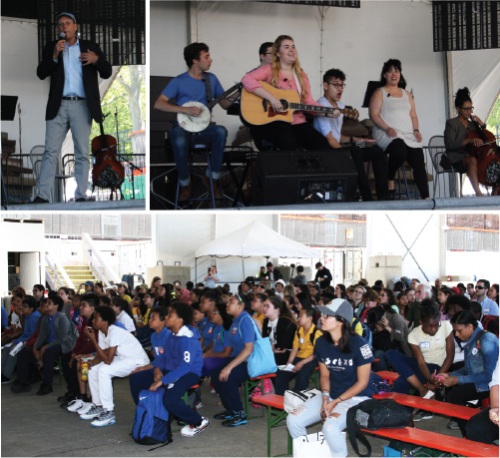
After lunch all students gathered at the beach club and kept their eyes glued to the stage as Paul Greenberg (renowned environmental author of Four Fish and American Catch) gave an inspiring keynote speech about environmentalism and Superhero Clubhouse performers presented their original musical number, “Salty Folk”. This musical piece tells the story ofa restoration scientist who sets down one optimistic oyster in NY Harbor who then meets a bunch of unenthused, pessimistic oysters who believe the Harbor will never be clean again. Slowly the new oyster changes the old oysters’ minds and convinces them to open their shells and clean the harbor water with her – allowing the return of all sorts of critters like blue crabs and Atlantic menhaden. The musical was fun, gave a short history of the Harbor’s degradation, the historical use of oysters, and drove home the point that each oyster (and each environmental advocate) can make a big difference when they work together.

About the author
Dylan Taillie

Dylan is a Science Communicator with IAN. He has experience in various areas of visual information, science communication and technical analyses. Strengths in data management, environmental assessment and stakeholder engagement. He has worked with IAN in various positions since 2016 and enjoys fishing and hiking.